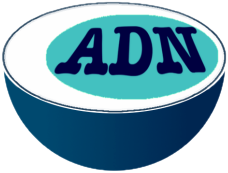Orateur
Dr
Bertrand CARE
(LBME)
Description
Chromatin is the scene of a vast set of epigenetic modifications such as histone marks and DNA methylation. The epigenomic state of chromatin is locally defined along the genome, and contributes to transcpription regulation by modulating regulatory sequence accessibility, transcription factor binding, and the propensity of other genetic processes. Genomic loci are stained with various combinations of histone marks so as to selectively enable tissue-specific profiles of gene expression, forming successive epigenomic domains. Additionnally, in human cells, chromosomes are spatially segregated in territories which are themselves composed of topologically associating domains (TAD) at the kilobase-to-megabase scale. Chromatin topology is linked to transcription control, for instance by selectively enabling regulatory sequence interaction with their target locus, by synchronizing expressions of genes located on the same TAD, thus acting as regulons, or by selectively localizing genes to transcription factories. The genome can therefore be seen as a succession of epigenomic domains of various epigenetic contents (called « colors »), with a typical size of a few hundred kilobase pairs, whose selective folding enables different gene expression patterns. We propose physics-driven models and computer simulations of chromosome conformation in the purpose of elucidating the role of polymer physics in determining the architecture of the genome. We demonstrate that two epigenomic domains of the same epigenomic color taken anywhere on the genome can have radically different conformations even if their sequence lengths are only slightly different. Therefore microdeletions or repeat expansions may lead to chromosomal loci misfolding which may be associated with cancer phenotypes (as a cause or a consequence). Hence, this simple scenario offers new perspectives on how cells can produce a large and diverse set of chromosome architectures using a very limited set of epigenomic states.
Bertrand R. Caré et al, 2015, Chromatin epigenomic domain folding: size matters, AIMS Biophysics, 2, 517-530.
Author
Dr
Bertrand CARE
(LBME)

